“Rainy days and Mondays always get me down.” Although I like the song, I have to disagree with the Carpenters on rainy days. I love hunting and fishing on rainy days.
Hunting squirrels during a hard rain was tough, they tended to stay in hollows and nests. But during a light rain or after a hard one, with wet leaves on the ground, I could slip quietly through the woods and get close enough for a shot without spooking them.
Deer hunting was similar. Although I usually stayed in my tree stand, I could still hunt, slowly moving parallel to deer trails and along ridge lines, watching for any movement. Although the deer usually spotted my movement before I spotted theirs, I did slip up on a few.
One day while hunting near Griffin I was easing along during a hard rain. I spotted something that looked out of place down the hill. I studied it and it did not move. I though it might be another hunter sitting on a stump in a rain suit, so I did not raise my rifle to get a close look thought my scope.
I decided to slip back the way I came, hoping the other hunter did not see me. But, of course, as soon as I took a step, the “hunter” flipped up its white tail and ran off. Although I did not get to shoot that deer, I still think I made the right decision for safety.
Since I usually stayed in my tree stand, I made a frame over my head with limbs and carried a big black garbage bag with me. If it rained, I could put the garbage bag over the frame in a few seconds and have a nice cover to keep the rain off.
Now several companies make camouflage umbrellas with ways to attach them to the tree to do the same thing.
Fishing in the rain seems to be better than sunny days too. Since bass do not have eyelids and their pupils cannot contract to limit light, they do not like bright sunlight. They tend to feed in shallower water on rainy days and they cannot see my lure and tell it is fake as easily, so they are easier to catch.
I have been fishing on some miserable days in heavy rain. Often I pour a cup of coffee and am never able to finish it, the rain keeps my cup full. All too often rain is so hard it makes my automatic bilge pumps run constantly.
In a November tournament a few years ago at Lake Lanier it rained like that. I found out my waterproof boots were not, and even my best heavy rain suit, Cabela’s GuideWear, let some water in, mostly down my sleeves.
That is one of the few tournaments I have come back to the ramp early. I caught my fifth fish with about an hour left to fish and decided I would go with what I had. That sounded better than staying out in the rain and being miserable for another hour trying to catch a bass that would cull one I had in the livewell like I usually would.
Luckily, I won so it was a good decision.
Although I have caught some of my biggest bass on rainy, cold days I do have my limits. One Christmas at Clarks Hill the wind was howling and sleet was falling. I found some shelter behind an island and caught an eight-pound largemouth. After landing it I decided I had enough and went in to show it off.
Another day there I put my boat in on an extremely cold, windy day. It was not raining and I was dressed for the cold, but as I idled out of the cove with the ramp and hit the wind and waves, drops splashing from the front of the boat froze in the air before hitting my jacket and fell off as ice. I turned around and went in!
Some days are just too bad for even me to fish.
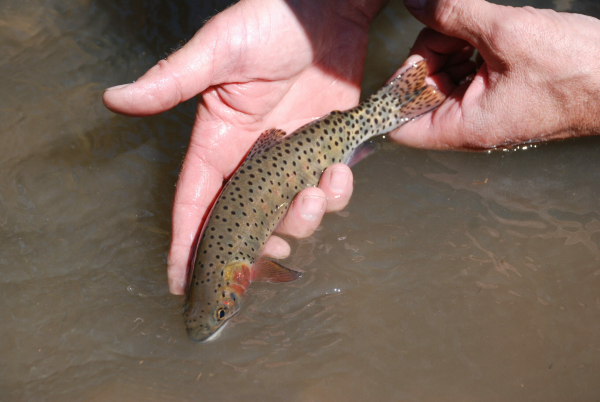 Colorado River cutthroat trout like this one didn’t take long to use a fishway on Poose Creek in Colorado.
Colorado River cutthroat trout like this one didn’t take long to use a fishway on Poose Creek in Colorado. 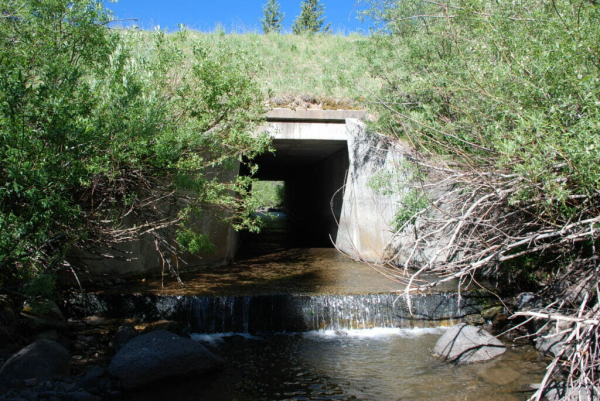
 The exiting culvert was retrofitted with a vertical slot fishway in 2014. Brian Hodge photo.
The exiting culvert was retrofitted with a vertical slot fishway in 2014. Brian Hodge photo.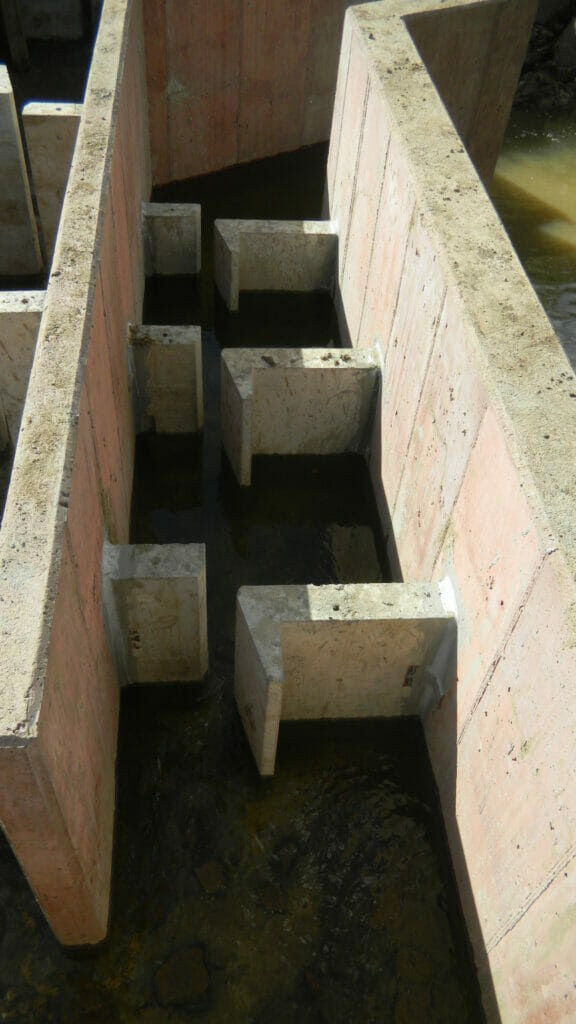 Slotted baffles in the 150-foot long fishway allow fish to swim up the ladder. Brian Hodge photo.
Slotted baffles in the 150-foot long fishway allow fish to swim up the ladder. Brian Hodge photo.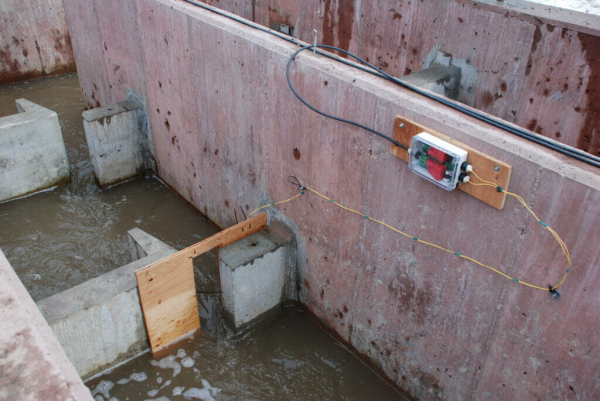 One of four stationary antennas installed in and around the fishway. Brian Hodge/Trout Unlimited
One of four stationary antennas installed in and around the fishway. Brian Hodge/Trout Unlimited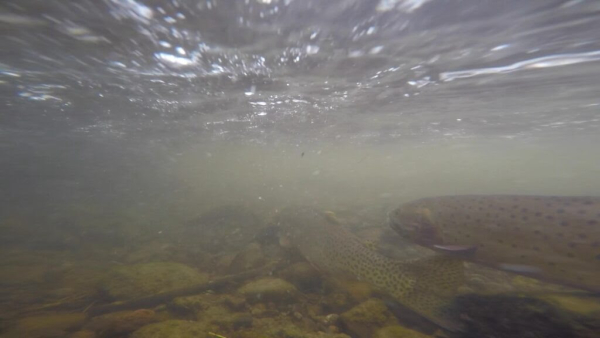 Colorado River cutthroat trout make their way to spawning grounds. Brian Hodge/Trout Unlimited
Colorado River cutthroat trout make their way to spawning grounds. Brian Hodge/Trout Unlimited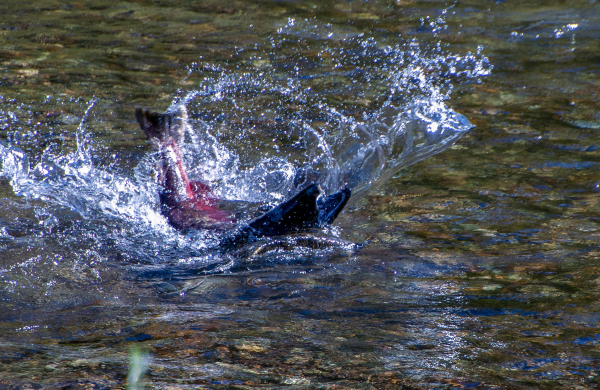 A male Chinook salmon, with red coloration, strikes another male Chinook on Clear Creek in Redding, California, during spawning season in October. Credit: Brandon Honig/USFWS By Brandon Honig, USF&W
A male Chinook salmon, with red coloration, strikes another male Chinook on Clear Creek in Redding, California, during spawning season in October. Credit: Brandon Honig/USFWS By Brandon Honig, USF&W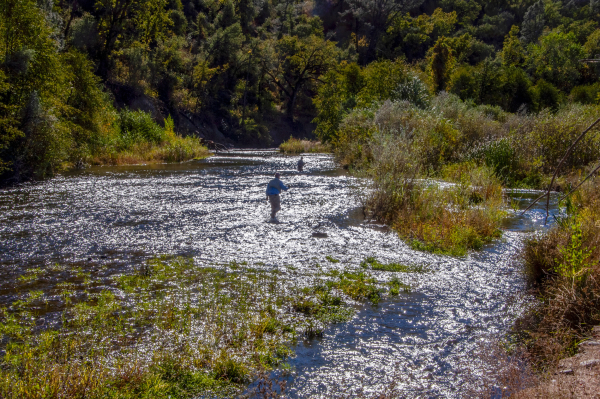 Local fishermen search for steelhead in Clear Creek, where restoration has created diverse conditions and habitats for fish. Credit: Brandon Honig/USFWS
Local fishermen search for steelhead in Clear Creek, where restoration has created diverse conditions and habitats for fish. Credit: Brandon Honig/USFWS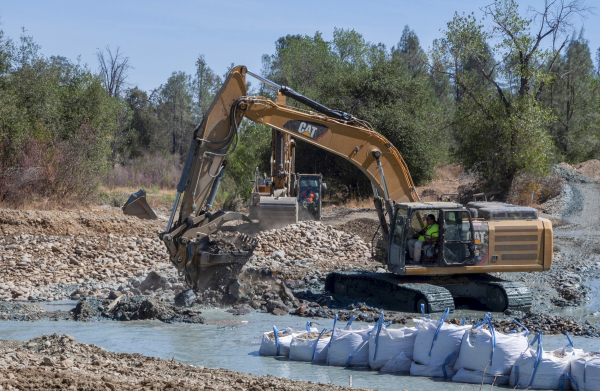 Workers plug a ditch dug by gravel-miners last century and redirect its water into a new channel on Clear Creek’s original path. Credit: Brandon Honig/USFWS
Workers plug a ditch dug by gravel-miners last century and redirect its water into a new channel on Clear Creek’s original path. Credit: Brandon Honig/USFWS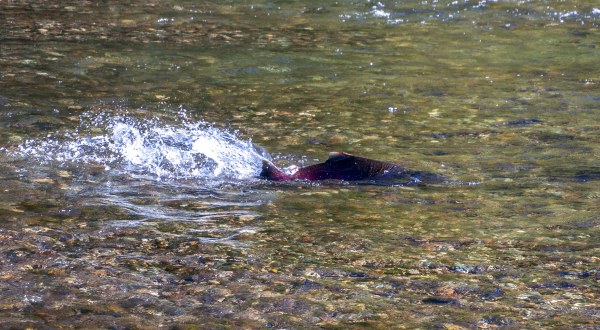 A Chinook salmon swims in Clear Creek during spawning season in October. Restoration work that began in the 1990s has turned Clear Creek into a salmon-producing hotspot. Credit: Brandon Honig/USFWS
A Chinook salmon swims in Clear Creek during spawning season in October. Restoration work that began in the 1990s has turned Clear Creek into a salmon-producing hotspot. Credit: Brandon Honig/USFWS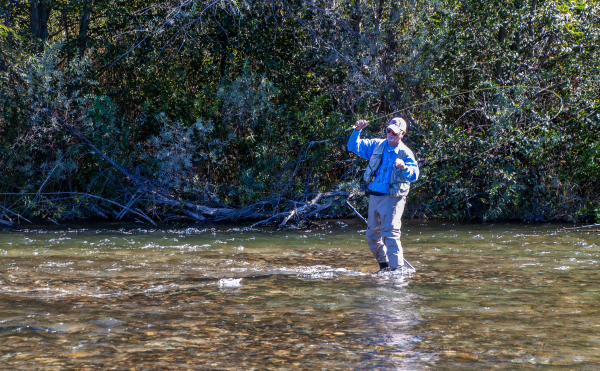 Creighton Smith of Redding tries to pull a steelhead out of Clear Creek in October. Wild steelhead must be released unharmed when caught in California. Credit: Brandon Honig/USFWS
Creighton Smith of Redding tries to pull a steelhead out of Clear Creek in October. Wild steelhead must be released unharmed when caught in California. Credit: Brandon Honig/USFWS By John Hall, Vermont Fish & Wildlife Department
By John Hall, Vermont Fish & Wildlife Department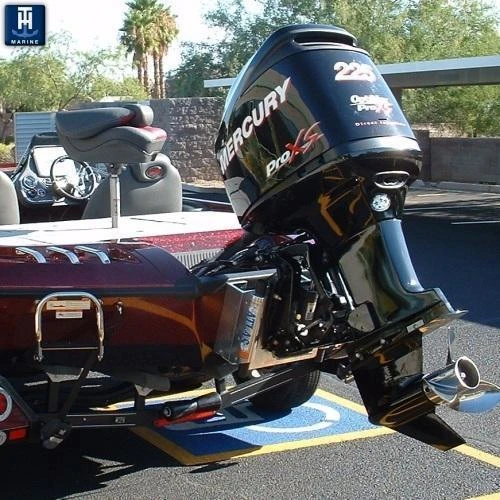

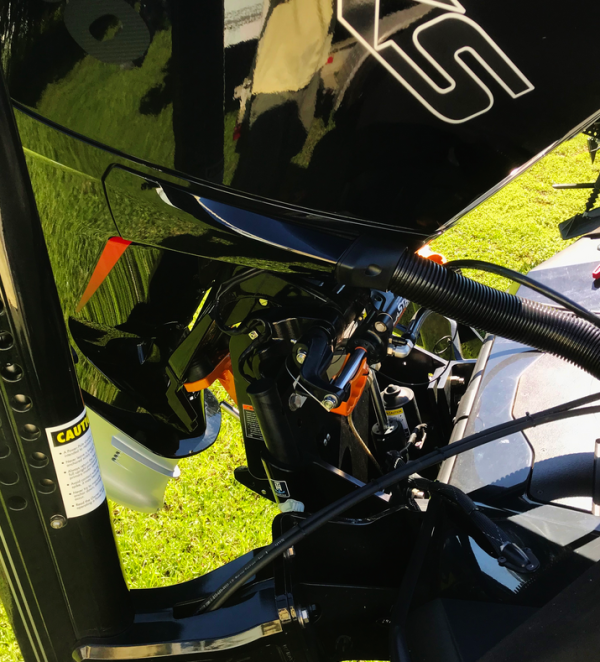
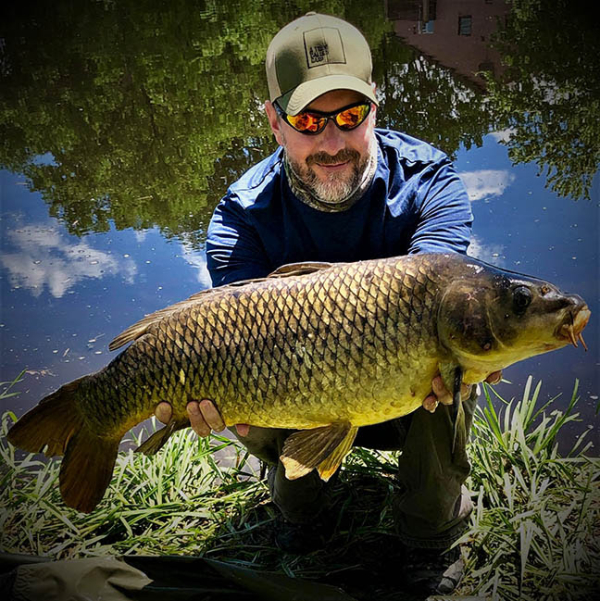 Carp specialist Nathan Cutler calls his Aqua-Vu his most important learning tool.
Carp specialist Nathan Cutler calls his Aqua-Vu his most important learning tool.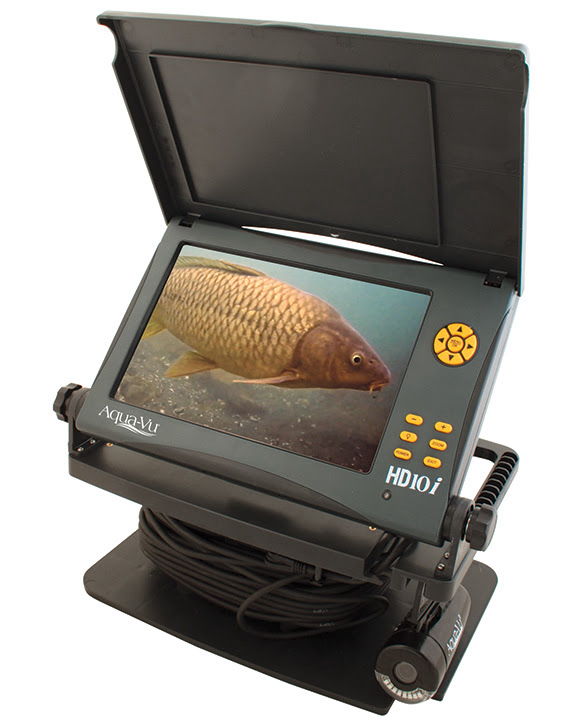 Aqua-Vu HD10i Underwater Viewing System
Aqua-Vu HD10i Underwater Viewing System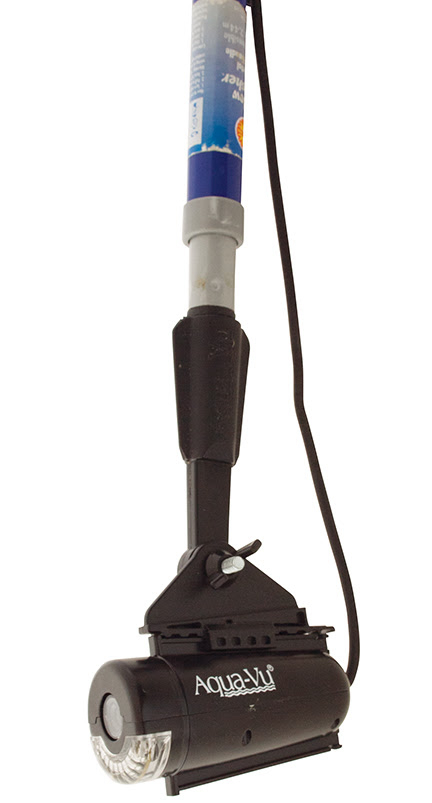 The XD Pole Adaptor allows for a variety of viewing angles and applications
The XD Pole Adaptor allows for a variety of viewing angles and applications